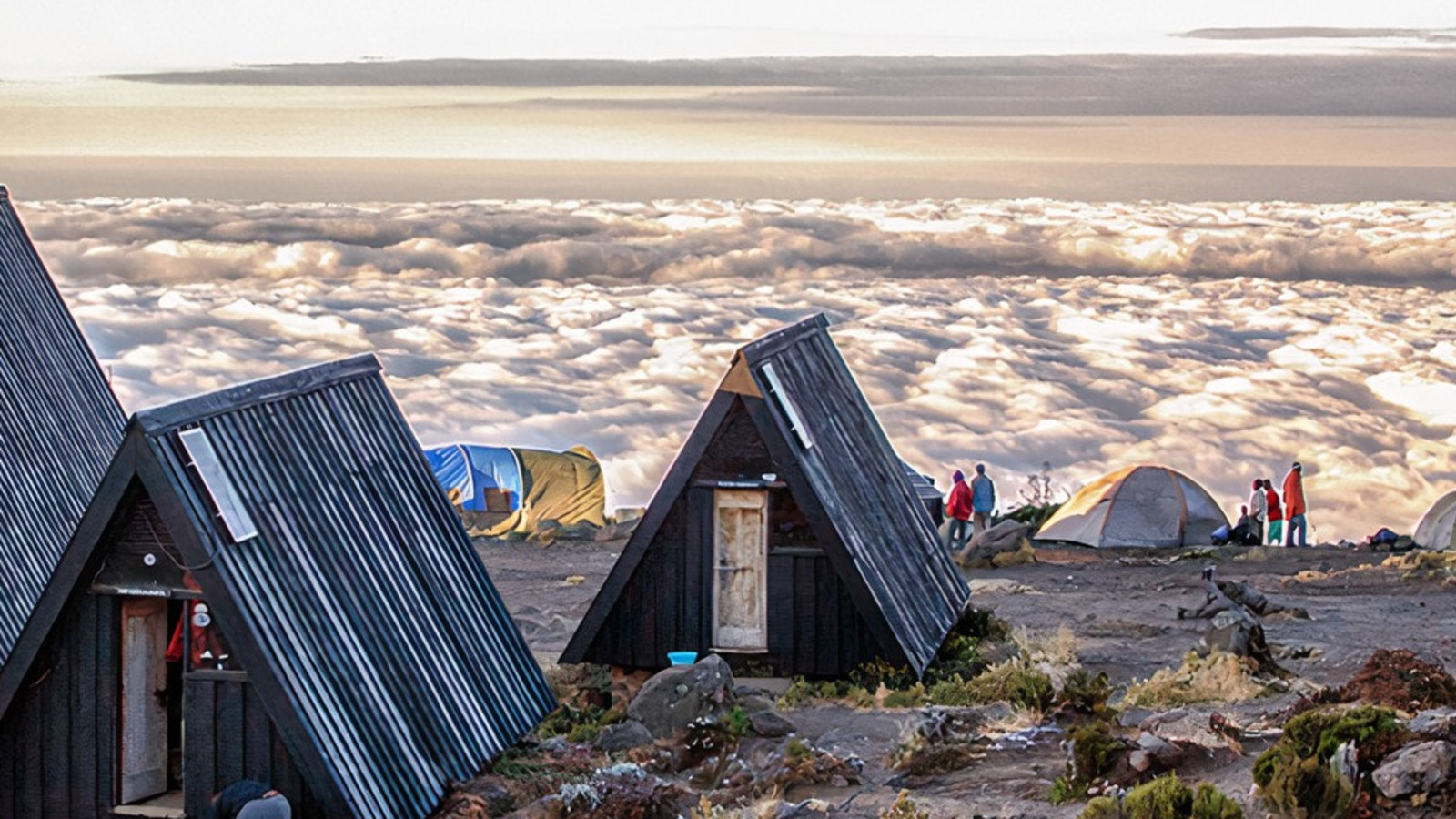6 Days Kilimanjaro trekking via Machame Route + 2 nights hotel stay



Machame Route gives a diverse landscape and fantastic views offers a unique experience to test your will power, fitness finesse, and mental strength. The route takes you through lush rain-forest, where colobus monkeys roam, into heath and moorland, with its many ferns and ericas, until finally reaching the icy caps of the mountain top. Varying altitudes, as well as a little help from lady luck, offer a good environment for acclimatization, enhancing your chances of reaching the summit. Overnights on these routes are in the tents.
el Agency.
Inclusions:
- Accommodation: Lodging at Weru Weru River Lodge or similar.
- Meals: Breakfast, lunch, and dinner provided during the trek.
- Transportation: Transfer from Kilimanjaro International Airport to the lodge.
- Trekking Support: Experienced guide and mountain support crew.
- Climbing Permits: Acquisition of necessary permits for Kilimanjaro National Park.
- Equipment: Tents, sleeping bags, and other necessary camping gear.
- Activities: Trekking from Marangu Gate to Mandara Hut, Mandara Hut to Horombo Hut, Horombo Hut to Kibo Hut, and summiting Uhuru Peak.
- Briefings: Orientation and briefing sessions conducted by tour managers.
- Safety Measures: Registration with search and rescue service, as well as guidance on altitude sickness prevention.
- Certificates: Commemorative certificates upon successful completion of the trek.
Exclusions:
- International Flights: Airfare to and from Kilimanjaro International Airport.
- Travel Insurance: Personal travel insurance covering medical expenses, trip cancellations, and emergencies.
- Personal Expenses: Expenses for additional meals, beverages, souvenirs, and optional activities.
- Gratuities: Tips for guides, porters, and other staff members.
- Accommodation Beyond Itinerary: Any additional lodging required before or after the scheduled trekking dates.
- Airport Transfers: Transfers to the airport upon departure beyond the designated schedule.
- Visa Fees: Fees associated with obtaining entry visas for Tanzania, if applicable.
- Medical Expenses: Costs incurred for medical treatment or medications during the trek.
- Optional Activities: Any additional excursions or activities not specified in the itinerary.
What is Mount Kilimanjaro?
- Mount Kilimanjaro is the highest peak in Africa, located in Tanzania. It is a dormant volcano and one of the most iconic mountains in the world.
How tall is Mount Kilimanjaro?
- The summit of Mount Kilimanjaro, called Uhuru Peak, stands at an elevation of 5,895 meters (19,341 feet) above sea level.
How long does it take to climb Mount Kilimanjaro?
- The duration of a Kilimanjaro climb varies depending on the route chosen. Most climbs typically range from 5 to 9 days.
What are the different routes up Mount Kilimanjaro?
- There are several routes to the summit of Kilimanjaro, each with its own characteristics and scenery. Popular routes include the Marangu, Machame, Lemosho, Rongai, and Northern Circuit routes.
Is climbing Mount Kilimanjaro difficult?
- Climbing Kilimanjaro is challenging due to its high altitude, but it doesn’t require technical climbing skills. However, climbers should be physically fit and prepared for the rigors of high-altitude trekking.
Do I need a guide to climb Mount Kilimanjaro?
- Yes, it is mandatory to have a registered guide accompany you on your Kilimanjaro climb. Guides are essential for safety, navigation, and providing support throughout the trek.
When is the best time to climb Mount Kilimanjaro?
- The best times for climbing Kilimanjaro are during the dry seasons, which are typically from late June to October and from December to March. These months offer clearer skies and better trekking conditions.
What should I pack for climbing Mount Kilimanjaro?
- Essential items for climbing Kilimanjaro include proper clothing for varying temperatures, sturdy hiking boots, a good quality sleeping bag, trekking poles, personal medications, and other necessary gear as recommended by your tour operator.
What are the risks of climbing Mount Kilimanjaro?
- The main risks of climbing Kilimanjaro include altitude sickness, which can affect anyone regardless of fitness level, as well as other potential hazards such as extreme weather conditions and physical exhaustion.
Do I need to train before climbing Mount Kilimanjaro?
- Yes, it is highly recommended to undergo physical training and preparation before attempting to climb Kilimanjaro. This can include cardiovascular exercises, strength training, and hiking to build endurance and fitness levels.
